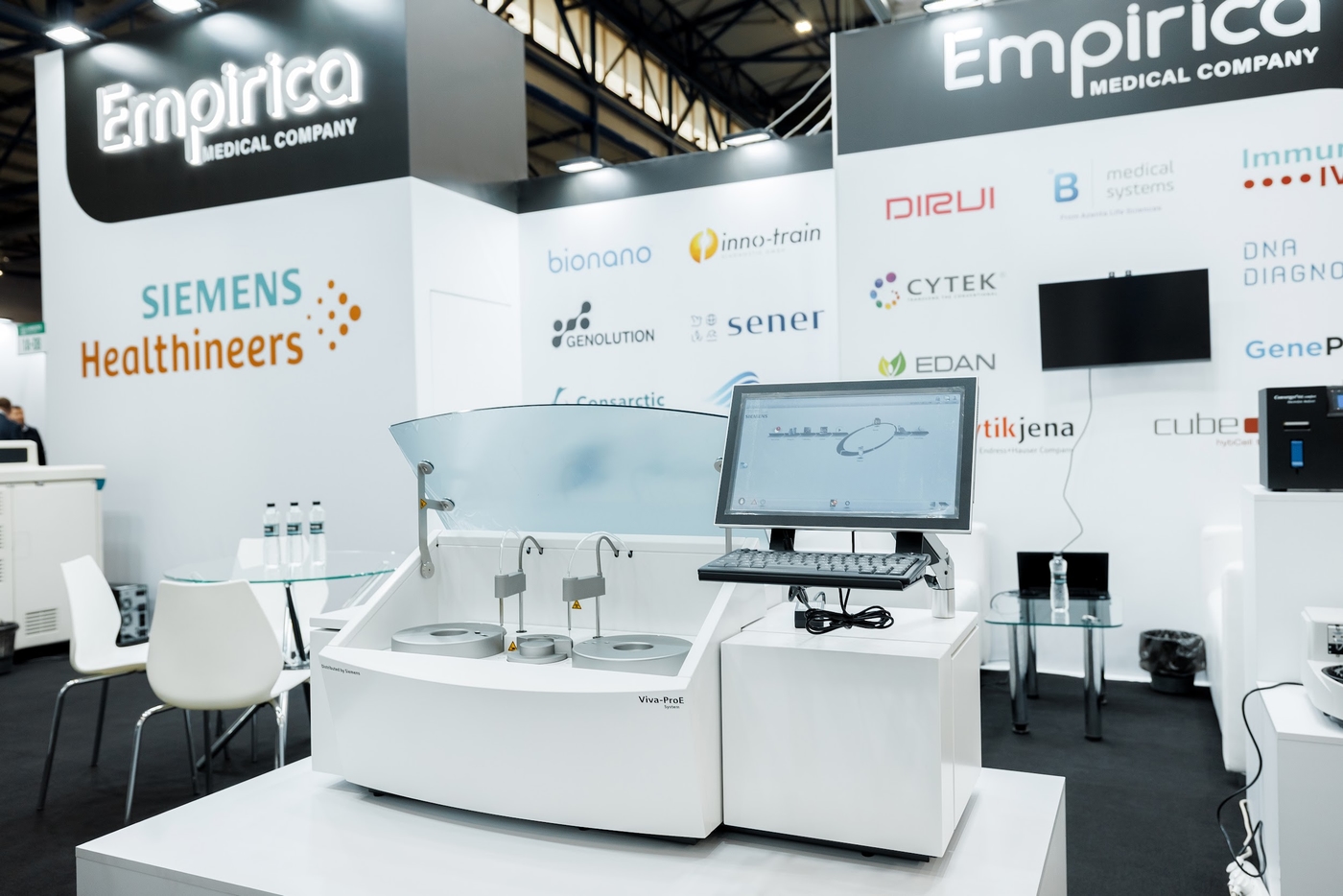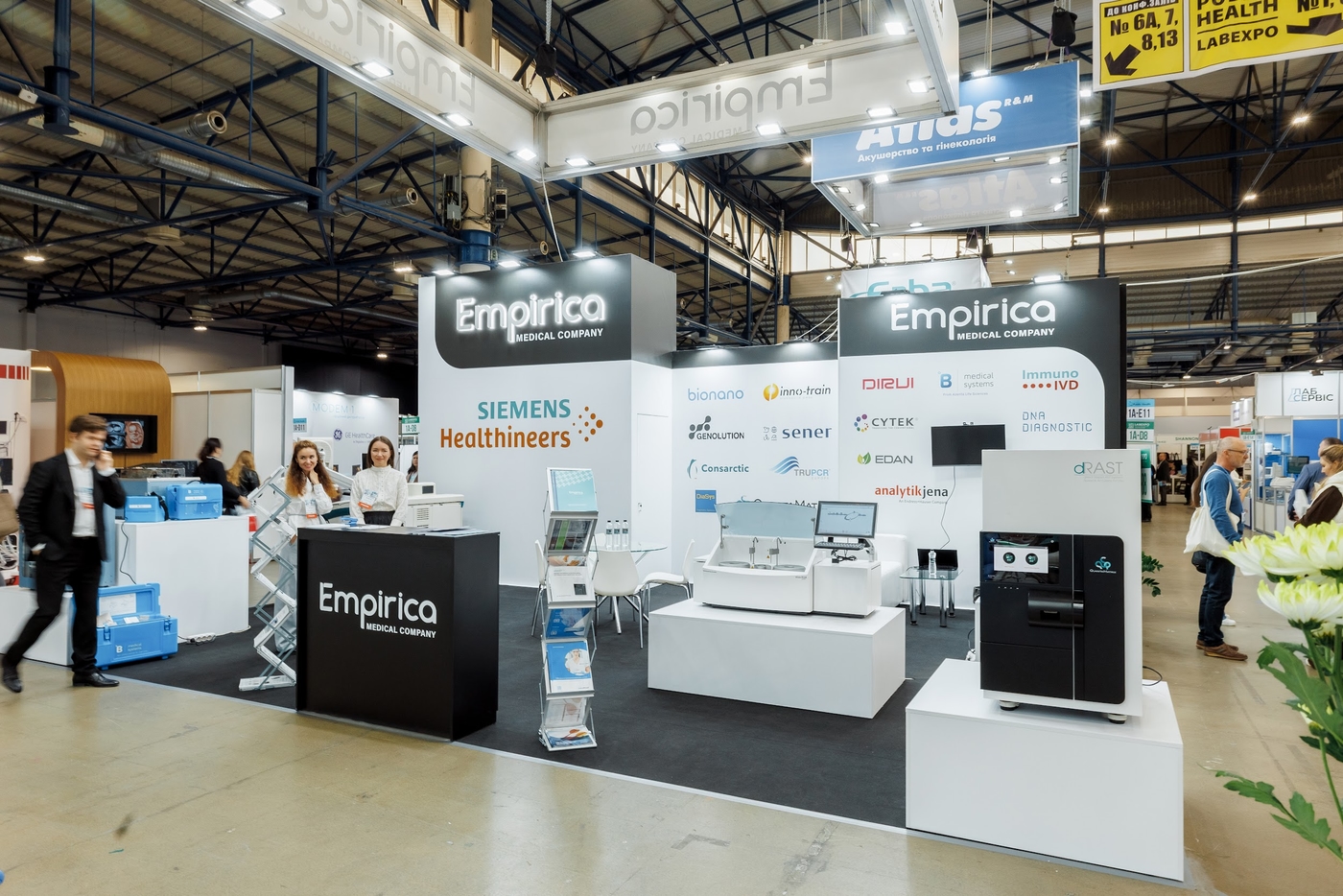Nephelometry is a method of determining the concentration of serum proteins, including immunoglobulins, which is based on the fact that particles in solution scatter light passing through the solution instead of absorb it. Nephelometric systems record the degree of scattering, which is correlated with the amount of protein in the solution [1]. The first mention of the clinical usage of the nephelometric system was described by L.M. Killingsworth and J. Savory in 1971 for the quantitative determination of immunoglobulin and it`s isotypes in human serum [2].
Since then, nephelometry has established itself as the main method for the quantitative determination of immunoglobulins (IgG, IgA, IgM, and IgE), as well as other serum proteins.
In modern biochemistry analyzers, the analysis is mainly performed by turbidimetric and nephelometric methods for the quantification of serum proteins. During the reaction, when an antibody against a protein reacts with a protein, a protein-antibody complex is formed, which is proportional to the concentration of the antibody. Nephelometry measures the light energy scattered (reflected) from the formed complex to a detector that is at an angle relative to the light source (Fig. 1A), while turbidimetry measures the difference in intensity of transmitted light when the detector is directly opposite the light source (Fig. 1B) [3].
Fig. 1. Schematic representation of the nephelometric (A) and turbidimetric (B) systems [4].
Nephelometric systems are more sensitive than turbidimetric systems because when the detector is positioned at an angle to the light beam, there is no scattering before the complex appears, so the detector measures zero or close to zero on the blank measurement (Fig. 2), and when the protein-antibody complex forms, scattering occurs, the intensity of which is proportional to the concentration. Whereas in turbidimetry, the maximum light is observed before the formation of the complex, so when the analyte is detected in the sample, the recorded light decreases only by a small amount from the maximum (Fig. 2) [3].
Fig. 2 Dependency graph of the blank measurement signal on the signal for the analyte complex formation in turbidimetric and nephelometric systems.
In nephelometric systems, the detector is often installed at 90° angle relative to the light source, but this angle makes it difficult to detect negligible scattering at low analyte concentrations. In the Atellica NEPH 630 system (Fig. 3), the detector is located at fixed angle 13-24°, which allows to detect the least scattering at the lowest concentrations of analyte in the sample, ensuring maximum sensitivity of the analyzer.
Due to its sensitivity and accuracy, nephelometry has established itself as the “gold standard” in protein quantification. Therefore, nephelometry is used by such organizations as the European Society for Medical Oncology and the International Myeloma Foundation for the diagnosis and treatment of multiple myeloma, monoclonal gammopathies, etc. [5].
Fig 3. Atellica NEPH 630 nephelometric analyzer.
The Atellica NEPH 630 is a modern, high-precision nephelometric analyzer for the serum proteins measurement in patient samples.
- It has a throughput of 65-100 tests/hour, depending on the method type.
- It provides reliable results and detect minimal changes in patient results due to the detector angle 13-24°, which allows evaluation of parameters in dynamic (e.g. to track the treatment process, select therapeutic drugs, etc.).
- The list includes diagnostic and prognostic markers for polyclonal and monoclonal gammopathies, autoimmune and rheumatoid diseases, complement system activity, coagulation disorders, kidney diseases, cardiovascular diseases, chronic alcoholism, blood-brain barrier dysfunction, inflammation, allergic diseases, etc.
Atellica NEPH 630 is perfect additions to a modern laboratory.
References:
- Moticka E.J. A Historical Perspective on Evidence-Based Immunology. Ch 39. 2016. https://doi.org/10.1016/B978-0-12-398381-7.00039-3
- Killingsworth L.M., Savory J. Automated Immunochemical Procedures for Measurement of Immunoglobulins IgG, IgA, and IgM in Human Serum. 1971. https://doi.org/10.1093/clinchem/17.9.936
- Levinsov S.S. Protein Electrophoresis, Serum Free Light Chain Assay and Other Biomarkers in Diagnosis and Monitoring of Monoclonal Protein Associated Disease. 2022. https://doi.org/10.1016/B978-0-12-818731-9.00141-5
- Diamandis E.P., Christopoulos T.K. Immunoassay. 1996. https://doi.org/10.1016/B978-0-12-214730-2.X5000-6
- Moreau P., San Miguel J., Sonneveld P. et al. Multiple myeloma: ESMO Clinical Practice Guidelines for diagnosis, treatment and follow-up. 2017. https://doi.org/10.1093/annonc/mdx096
.jpg)


